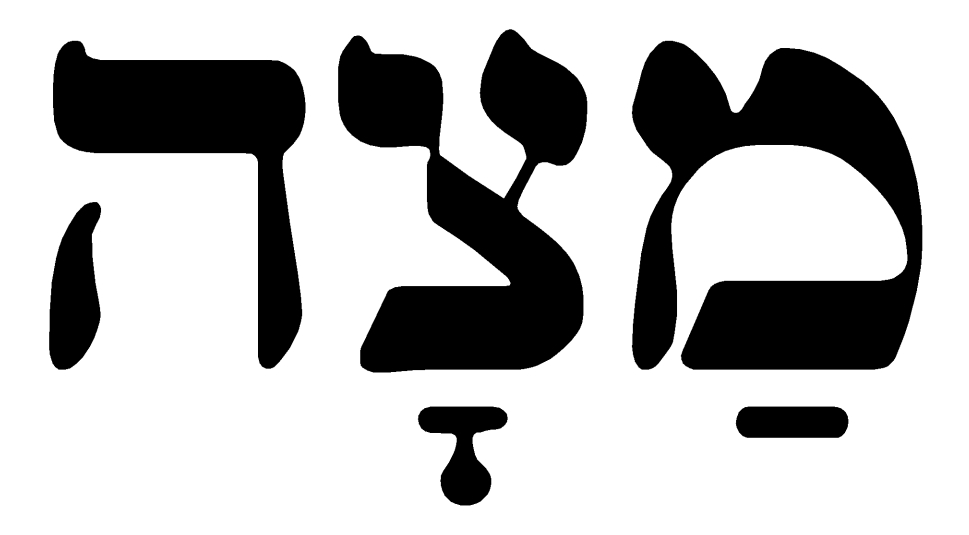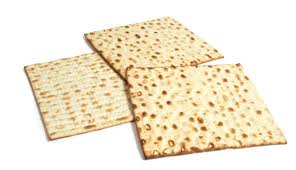This flat bread is known as “matzah”. The three Hebrew letters are mehm, tzaddik, and hei.

A large, cracker-like wafer that is eaten throughout the holiday of Passover in place of risen bread, in order to commemorate the slavery and liberation our ancestors experienced. It is a symbol of ritual and spiritual purity, free of leaven just as we must free ourselves of the “leaven” of ego, sin, and old habits.
It is also a symbol of paradox: it is the bread we eat when other bread is forbidden, and it simultaneously symbolizes slavery and freedom.
 At the Seder, three pieces of matzah are prominently displayed, reminding Jews of both the three Biblical classes of Jews (Priest, Levite and Israelite) and of the three epochs (Eden, Historic time, and the Time of the Messiah).
At the Seder, three pieces of matzah are prominently displayed, reminding Jews of both the three Biblical classes of Jews (Priest, Levite and Israelite) and of the three epochs (Eden, Historic time, and the Time of the Messiah).
A matzah is made using only specially supervised (yeast free) wheat and water. It is then baked precisely eighteen minutes (the number symbolizing life).
One aspect of unleavened bread that has particular occult symbolism is the afikoman. The afikoman is one-half of a matzah wafer that is publicly broken, only to be hidden away during the Seder. Children must then find it or steal it from the holder in order for the Seder to continue. Originally intended as a pedagogical tool to keep the attention of children during the ceremony, by the Middle Ages the afikoman started to be used as an amulet against the Evil Eye. Customs include preserving a piece at home for good luck, while some people may actually carry crumbs of the afikoman in their coat pockets. Pregnant women will sometimes keep a piece of afikoman nearby to ensure an easy labor. According to one tradition, an afikoman kept seven years can avert a flood or other natural disaster.
Article copyright 2004 Geoffrey Dennis.






























